You Must Install Or Update .Net To Run This Application.
The .NET Framework is a software framework developed by Microsoft that provides a programming model, extensive libraries, and tools for building different types of applications. It is an essential component for developers as it allows them to create robust and scalable applications for various platforms, including Windows, web, and mobile.
1. Simplified Development Process: The .NET Framework offers a simplified development process by providing a wide range of reusable components and libraries. These components handle common functionalities, such as database connectivity, user interface, and security, which can significantly reduce the time and effort required for application development.
2. Platform Independence: With the .NET Framework, developers can create applications that can run on different platforms without the need for significant code modifications. This cross-platform compatibility allows for greater flexibility and reach for developers, as they can target multiple platforms, including Windows, macOS, and Linux.
3. Enhanced Performance: The .NET Framework incorporates an optimized just-in-time (JIT) compiler and a garbage collector, which helps in improving the performance of applications. The JIT compiler compiles the intermediate language (IL) code into native machine code at runtime, resulting in faster execution. The garbage collector automatically manages memory allocation and deallocation, reducing the chance of memory leaks and improving overall performance.
4. Secure and Reliable: The .NET Framework includes built-in security features, such as code access security, encryption, and authentication mechanisms, which help ensure the safety and integrity of applications. Additionally, the framework undergoes rigorous testing and updates by Microsoft, making it a reliable choice for application development.
Reasons for the Requirement to Install or Update .NET Framework
When you encounter a message stating “You must install or update .NET to run this application,” it means that the application you are trying to run requires a specific version of the .NET Framework or a newer version than what is currently installed on your system. There are several reasons why an application may have this requirement:
1. Dependency on .NET Framework Components: Many modern applications, especially those developed using Microsoft technologies, rely heavily on the .NET Framework. They utilize its libraries and components for various functionalities, such as user interface, database connectivity, and security. Therefore, installing or updating the required version of the framework is necessary to ensure proper operation of the application.
2. Compatibility with Application Frameworks: Some applications are built using specific application frameworks or platforms that are based on the .NET Framework. For example, .NET Core is a cross-platform framework for developing web and cloud-based applications. To run applications built using these frameworks, the corresponding version of the .NET Framework must be installed or updated.
3. Security and Performance Updates: As technology evolves, so do the security risks and performance optimizations. Microsoft regularly releases updates and patches for the .NET Framework to address vulnerabilities, improve performance, and add new features. Installing these updates is crucial to ensure that your system remains secure and that your applications can take advantage of the latest improvements.
Step-by-Step Guide to Installing or Updating .NET Framework
To install or update the .NET Framework on your system, follow these step-by-step instructions:
1. Visit the Microsoft website: Go to the official Microsoft website (https://dotnet.microsoft.com/download) to download the .NET Framework.
2. Select the appropriate version: Choose the version of the .NET Framework that corresponds to the requirement of the application you want to run or the latest version available.
3. Download the installer: Click on the download button next to the selected version of the .NET Framework to start downloading the installer.
4. Run the installer: Once the download is complete, run the installer by double-clicking on the downloaded file.
5. Follow the on-screen instructions: The installer will guide you through the installation process. Follow the on-screen instructions, such as accepting the license agreement and selecting the installation location.
6. Install required components: During the installation, the installer may prompt you to install additional components or dependencies. Make sure to select and install these components to ensure the proper functioning of the .NET Framework and the applications that rely on it.
7. Complete the installation: Once the installation is complete, you can verify the installation by checking if the required version of the .NET Framework appears in the installed programs or features list of your system.
Troubleshooting Common Issues during Installation or Update of .NET Framework
While installing or updating the .NET Framework, you may encounter some common issues. Here are a few troubleshooting tips to resolve them:
1. Ensure System Requirements: Before installing or updating the .NET Framework, make sure that your system meets the minimum system requirements specified by Microsoft. Check factors such as operating system version, processor architecture, and available disk space.
2. Check Internet Connectivity: Ensure that you have a stable internet connection throughout the installation process. A poor or unstable connection may cause the installation to fail or result in incomplete downloads.
3. Disable Antivirus Software: Antivirus programs sometimes interfere with the installation process, as they may identify certain components of the .NET Framework as potential threats. Temporarily disable your antivirus software while installing or updating the framework.
4. Run as Administrator: To avoid any permission-related issues, right-click on the installer and select “Run as administrator.” This action ensures that the installation process has the necessary administrative rights to modify system files and registry settings.
5. Clean Installation: If you are experiencing persistent issues, consider uninstalling any existing versions of the .NET Framework from your system before installing the desired version. Use Microsoft’s Removal Tool (https://support.microsoft.com/en-us/topic/uninstall-microsoft-net-framework-18578eeb-7b65-4487-b7e1-f2ed039275ac) to fully remove the framework.
Ensuring Compatibility between the Application and the .NET Framework Version
To ensure compatibility between an application and the .NET Framework version, it is crucial to identify the specific version of the framework required by the application. This information can usually be found in the application’s system requirements or documentation.
Start with identifying the required version and then crosscheck it with the versions of the .NET Framework installed on your system. You can check the installed versions by going to the Control Panel, selecting “Programs and Features” (or “Uninstall a Program”), and looking for entries related to the .NET Framework.
If the required version is not installed, follow the earlier mentioned step-by-step guide to install or update the .NET Framework accordingly. Once the compatible version is installed, the application should be able to run without any issues.
Understanding the Benefits of Keeping the .NET Framework Up to Date
Updating the .NET Framework regularly comes with numerous benefits, including:
1. Security Enhancements: Updating the .NET Framework ensures that your system is protected against the latest security vulnerabilities. As cyber threats evolve, Microsoft releases updates to close any potential security loopholes and safeguard your applications and data.
2. Performance Improvements: The .NET Framework updates often include performance optimizations, such as improved memory management, code execution, and faster compilation. Keeping the framework up to date allows your applications to leverage these performance improvements, resulting in better responsiveness and overall execution speed.
3. Bug Fixes and Stability: Updates also address known bugs and stability issues in the framework, reducing the likelihood of application crashes or unexpected behavior. By staying up to date, you can ensure a more reliable and stable environment for your applications.
4. Compatibility with New Features: .NET Framework updates often introduce new features and enhancements. By updating to the latest version, you can take advantage of these new features in your applications, providing better functionality and user experience.
Exploring Alternative Solutions for Running the Application without Installing or Updating .NET Framework
In some cases, you may want to explore alternative solutions for running an application without installing or updating the .NET Framework. Here are a few options to consider:
1. Application Virtualization: Application virtualization allows you to run applications in isolated environments without modifying your host system. Using tools like Microsoft’s App-V or VMware ThinApp, you can package the application along with its dependencies, including the required version of the .NET Framework, into a standalone executable or virtual container.
2. Runtime Emulators: There are third-party runtime emulators available that can run applications without the need for the specific version of the .NET Framework. These emulators simulate the runtime environment and dependencies required by the application, effectively bypassing the need to install or update the .NET Framework.
3. Web-Based or Cloud Solutions: If the application is available as a web-based or cloud-based service, you can access it through a web browser or other cloud-based platforms without the need for local installation or dependencies.
FAQs (Frequently Asked Questions)
Q1: What is the .NET Framework?
A1: The .NET Framework is a software framework developed by Microsoft that provides a programming model, libraries, and tools for building applications for various platforms.
Q2: Why is it important to install or update the .NET Framework?
A2: Installing or updating the .NET Framework is crucial because many applications rely on its components and functionalities to run properly. It ensures compatibility, security, performance, and access to the latest features.
Q3: How do I install or update the .NET Framework?
A3: To install or update the .NET Framework, visit the Microsoft website, download the installer for the desired version, run the installer, and follow the on-screen instructions. Make sure to install any additional components or dependencies as prompted.
Q4: What should I do if I encounter issues during the installation or update?
A4: If you encounter issues during the installation or update, ensure that your system meets the minimum requirements, check your internet connectivity, temporarily disable antivirus software, run as administrator, or perform a clean installation by uninstalling existing versions before installing the desired version.
Q5: How can I ensure compatibility between an application and the .NET Framework version?
A5: To ensure compatibility, identify the required version of the .NET Framework for the application and crosscheck it with the installed versions on your system. If the required version is not installed, follow the installation guide mentioned earlier to install or update the .NET Framework accordingly.
Q6: What are the benefits of keeping the .NET Framework up to date?
A6: Keeping the .NET Framework up to date ensures security enhancements, performance improvements, bug fixes, stability, and compatibility with new features, resulting in a more secure, reliable, and feature-rich application environment.
Q7: Are there alternative solutions for running an application without installing or updating the .NET Framework?
A7: Yes, alternative solutions include application virtualization, runtime emulators, or accessing web-based or cloud-based versions of the application that do not require local installation or dependencies.
🖥️ To Run This Application You Must Install .Net Fix
What Is .Net Desktop Runtime 6.0 4 X64?
The .NET Desktop Runtime 6.0 4 x64 is a software framework developed by Microsoft that allows developers to build and run applications on Windows-based systems. It provides a wide range of tools and libraries for creating different types of applications, including desktop, web, cloud, and mobile applications. The runtime environment ensures that these applications can run smoothly on the targeted systems, providing a consistent and secure experience for users.
The term “x64” refers to the 64-bit version of the .NET Desktop Runtime 6.0. It is specifically designed to take full advantage of 64-bit architectures, which allows for better performance and increased memory capacity. This version is recommended for systems that operate on a 64-bit version of Windows.
.NET Desktop Runtime 6.0 4 x64 Features and Advantages:
1. Improved Performance: The 64-bit architecture of the .NET Desktop Runtime 6.0 4 x64 allows applications to run faster and process larger amounts of data. It can handle more memory allocation, resulting in improved performance and reduced latency.
2. Enhanced Security: .NET Desktop Runtime 6.0 4 x64 provides robust security features to protect applications and their data. It includes built-in security controls, such as code access security, encryption, and authentication, to ensure the integrity and confidentiality of the applications and the underlying systems.
3. Cross-platform compatibility: The .NET framework is designed to be cross-platform, which means an application developed using the .NET Desktop Runtime 6.0 4 x64 can run seamlessly on different operating systems like Windows, macOS, and Linux. This allows developers to easily target multiple platforms without significant code changes.
4. Rich Development Environment: The .NET Desktop Runtime 6.0 4 x64 offers a comprehensive set of development tools and libraries, making it easier for developers to create robust and feature-rich applications. It supports various programming languages such as C#, Visual Basic, and F#, along with a wide range of frameworks and APIs.
5. Modern UI Design: With .NET Desktop Runtime 6.0 4 x64, developers can create visually appealing and modern user interfaces. It provides support for Windows Presentation Foundation (WPF) and Windows Forms, allowing developers to build stunning graphical interfaces with advanced features like animations, media playback, and touch support.
6. Simplified Deployment: The runtime environment simplifies the deployment process by allowing developers to package applications along with their dependencies into a single executable or installer. This ensures that all the necessary components are present on the target system, reducing the chances of compatibility issues.
7. Extensive Library Support: The .NET Desktop Runtime 6.0 4 x64 comes with a vast collection of libraries and APIs that offer out-of-the-box functionality for various tasks such as file management, network communication, database access, and more. Developers can leverage these libraries to save time and effort in coding complex functionalities from scratch.
FAQs:
Q1. Is .NET Desktop Runtime 6.0 4 x64 backward compatible?
Yes, the .NET Desktop Runtime 6.0 4 x64 is backward compatible, allowing applications built on previous versions of the .NET framework to run without any modifications. However, certain compatibility issues may arise if an application relies on specific features or libraries that have been deprecated or removed in the latest version.
Q2. Can applications developed in the .NET Desktop Runtime 6.0 4 x64 run on older Windows versions?
The .NET Desktop Runtime 6.0 4 x64 requires a minimum version of Windows 10 (version 1809) or Windows Server 2019 for deployment. It may not be compatible with older versions of Windows, such as Windows 7 or Windows 8.1. However, users can install the necessary runtime components on their older systems to run applications developed using the .NET framework.
Q3. What are the system requirements for .NET Desktop Runtime 6.0 4 x64?
The system requirements for .NET Desktop Runtime 6.0 4 x64 include a 64-bit version of Windows 10 (version 1809 or later) or Windows Server 2019 (or later). The system also needs to have sufficient memory and storage capacity to run applications efficiently.
Q4. Is the .NET Desktop Runtime 6.0 4 x64 free to use?
Yes, the .NET Desktop Runtime 6.0 4 x64 is available as a free and open-source framework. Developers can freely download and use it to build applications without any licensing costs. However, certain features and tools offered by Microsoft may have their own licensing terms.
Q5. How can I update the .NET Desktop Runtime to version 6.0 4 x64?
To update the .NET Desktop Runtime to version 6.0 4 x64, you can visit the official Microsoft website or use the .NET Core SDK or Visual Studio to manage updates. Microsoft regularly releases new versions and updates to ensure that developers can access the latest features and security fixes.
In conclusion, the .NET Desktop Runtime 6.0 4 x64 is a powerful software framework that empowers developers to create and run applications across different platforms. Its 64-bit architecture, enhanced security features, cross-platform compatibility, and rich development environment make it an attractive choice for building robust and modern applications. With a wide range of libraries and simplified deployment options, developers can streamline the development process and deliver high-quality applications to end-users.
Can I Run .Net On Mac?
In recent years, there has been a growing interest in using Microsoft’s .NET framework for developing and running applications on macOS. With the increasing popularity of Mac computers among developers, many are wondering if it is possible to run .NET on this platform. In this article, we will explore the capabilities and options available for running .NET on a Mac.
Traditionally, .NET development has been primarily focused on Windows. This is because the .NET framework was originally designed by Microsoft for their Windows operating systems. However, over time, Microsoft has made significant strides in expanding the reach of .NET by introducing cross-platform compatibility.
One of the major milestones in this journey was the development of .NET Core, a modular and lightweight version of the .NET framework that allows developers to build applications that can run on various platforms, including macOS. With .NET Core, Microsoft aimed to create a unified platform that could deliver the same powerful capabilities of .NET while enabling developers to target multiple operating systems.
To run .NET Core on a Mac, you need to first install the .NET Core SDK, which includes the necessary tools and libraries for developing and running .NET Core applications. Microsoft provides a downloadable package for macOS that makes the installation process straightforward and user-friendly.
Once the .NET Core SDK is installed, you can choose from various development environments to write .NET code on your Mac. The most popular option is Visual Studio Code, a lightweight and extensible code editor that provides rich support for .NET Core development. Visual Studio for Mac is another alternative that offers a more comprehensive integrated development environment (IDE) experience.
Running .NET Core applications on a Mac is as simple as executing a few commands in the terminal. The .NET Core CLI (Command Line Interface) provides a set of tools for building, testing, and running .NET Core applications from the command prompt. This cross-platform tooling allows developers to seamlessly switch between macOS and Windows without any compatibility issues.
However, it is important to note that while .NET Core is now fully cross-platform, certain Windows-specific features and APIs may not be available on macOS. This means that applications relying heavily on platform-dependent functionality may require additional modifications or alternative implementations to run properly on a Mac.
Another option for running .NET on a Mac is by using virtualization or emulation technologies. These tools allow you to create a virtual machine or emulate a Windows environment within macOS, providing a seamless experience for running Windows-specific .NET applications.
Virtualization software such as Parallels Desktop, VMware Fusion, or Oracle’s VirtualBox enables you to install and run a complete Windows operating system on your Mac. This allows you to have the full Windows experience, enabling you to install the full .NET framework and run any .NET applications without any limitations.
Emulation tools like Wine can also be used to run some Windows applications on a Mac without requiring a full virtual machine. Wine provides a compatibility layer that allows Windows executables to run on macOS by implementing the necessary Windows APIs. While Wine support for .NET applications may not be perfect, it can be a viable solution for running simple .NET applications or older versions of the framework.
Frequently Asked Questions (FAQs):
Q: Can I develop .NET applications on a Mac?
A: Yes, you can develop .NET applications on a Mac using the .NET Core SDK and development tools like Visual Studio Code or Visual Studio for Mac.
Q: Can I run Windows-specific .NET applications on a Mac?
A: Yes, you can run Windows-specific .NET applications on a Mac by using virtualization or emulation software. Tools like Parallels Desktop or VMware Fusion allow you to create a Windows environment on your Mac, enabling you to run any .NET application.
Q: Are there any limitations to running .NET on a Mac?
A: While .NET Core is cross-platform, some Windows-specific features may not be available on macOS. Applications relying heavily on platform-dependent functionality may require modifications or alternative implementations to run properly on a Mac.
Q: Can I use Visual Studio on a Mac?
A: Yes, you can use Visual Studio for Mac, a comprehensive IDE developed by Microsoft specifically for macOS, to develop .NET applications.
Q: Can I run older versions of the .NET framework on a Mac?
A: While .NET Core is the recommended option for cross-platform development, you can use virtualization or emulation tools to run older versions of the .NET framework on a Mac.
In conclusion, running .NET on a Mac is not only possible but also increasingly accessible. With the introduction of .NET Core and the availability of powerful development tools, developers can now build and run .NET applications on macOS with relative ease. Whether through .NET Core or virtualization technologies, Mac users can take advantage of the rich ecosystem and capabilities offered by the .NET framework.
Keywords searched by users: you must install or update .net to run this application. You must install or update .net to run this application Ubuntu, To run this application you must install .net Core, You must install or update .net to run this application Mac, You must install .net Desktop Runtime, Aewdu exe To run this Application you must Install .net core, the specified version of microsoft.netcore.app or microsoft.aspnetcore.app was not found., To run this application, you first must install one of the following versions of the net Framework, http error 500.31 – failed to load asp.net core runtime
Categories: Top 30 You Must Install Or Update .Net To Run This Application.
See more here: nhanvietluanvan.com
You Must Install Or Update .Net To Run This Application Ubuntu
The .NET framework is a free and open-source software development platform developed by Microsoft. It is used to build and run applications on Windows, macOS, and Linux operating systems. If you are encountering an error message stating “You must install or update .NET to run this application” on your Ubuntu system, it means that the required version of .NET framework is either missing or outdated. In this article, we will explore how you can install or update .NET on Ubuntu and address some frequently asked questions about this topic.
Why Do I Need to Install or Update .NET on Ubuntu?
Many modern applications are built using the .NET framework, especially those developed on the Windows platform. To ensure compatibility and proper functioning, the application may require a specific version of .NET framework to be installed on your system. If you encounter the “You must install or update .NET to run this application” error message, it means that the application you are trying to run requires a newer or specific version of .NET framework that is not currently installed on your Ubuntu system.
How to Install .NET on Ubuntu?
There are a few different ways to install .NET on your Ubuntu system, depending on your preference. In this section, we will cover two commonly used methods for installing .NET on Ubuntu: using the package manager and manually downloading and installing.
1. Installing .NET using the Package Manager:
The package manager is the easiest and recommended way to install .NET on Ubuntu. Follow the steps below:
Step 1: Open the terminal on your Ubuntu system.
Step 2: Update your package list by running the command:
“`bash
sudo apt update
“`
Step 3: Install the .NET runtime by executing the following command:
“`bash
sudo apt-get install apt-transport-https
“`
Step 4: Import the Microsoft package signing key by running this command:
“`bash
wget https://packages.microsoft.com/config/ubuntu/20.04/packages-microsoft-prod.deb -O packages-microsoft-prod.deb
“`
“`bash
sudo dpkg -i packages-microsoft-prod.deb
“`
Step 5: Install the .NET runtime by issuing the command:
“`bash
sudo apt-get install -y dotnet-runtime-{{version}}
“`
Replace `{{version}}` in the command above with the desired version of .NET you need to install.
2. Manually Downloading .NET and Installing:
If the package manager method is not suitable for any reason, you can manually download and install .NET as well. Here are the steps:
Step 1: Visit the official .NET website at `https://dotnet.microsoft.com/download/`.
Step 2: Select the desired version of .NET and download the package suitable for Ubuntu.
Step 3: Open the terminal and navigate to the directory where you downloaded the .NET package.
Step 4: Extract the downloaded package by executing the command:
“`bash
tar -xf {{package-name}}.tar.gz
“`
Replace `{{package-name}}` with the actual name of the downloaded package.
Step 5: Install .NET by running the following commands:
“`bash
cd {{package-name}}
“`
“`bash
sudo ./dotnet-install.sh
“`
Follow the on-screen instructions to complete the installation process.
Frequently Asked Questions (FAQs):
Q1: Can I have multiple versions of .NET installed on Ubuntu?
A1: Yes, you can have multiple versions of .NET installed on your Ubuntu system. Each version will be installed in its own isolated folder, and you can specify which version to use for each application.
Q2: How do I know which version of .NET is required for an application?
A2: The application developer usually mentions the required .NET version in the application documentation or release notes. If not specified, you can try installing the latest stable version of .NET and check if the application runs.
Q3: Can I uninstall .NET from my Ubuntu system?
A3: Yes, you can uninstall .NET if you no longer require it or want to free up disk space. Open the terminal and run the appropriate command, based on how you installed .NET. For example, if you used the package manager method, run `sudo apt-get remove dotnet-runtime-{{version}}`.
In conclusion, if you encounter the error message “You must install or update .NET to run this application” on your Ubuntu system, it means that the required version of .NET framework is missing or outdated. Follow the provided steps to install or update .NET on Ubuntu, either through the package manager or by manually downloading and installing. Remember to check the application’s documentation for the required .NET version and feel free to uninstall .NET if no longer needed.
To Run This Application You Must Install .Net Core
In the field of software development, developers often encounter the requirement to run applications built on different programming languages and frameworks. One such popular framework is .NET Core, which allows developers to build applications that are platform-independent and can run on Windows, macOS, and Linux. In this article, we will explore what .NET Core is and why it is necessary to install it to run certain applications.
What is .NET Core?
.NET Core is a free and open-source framework designed to allow developers to create modern, cross-platform applications. It started as a modular subset of the full .NET Framework but has evolved into a separate platform. Developed by Microsoft, .NET Core combines the best features of the .NET Framework with new technologies to provide a lightweight and flexible solution.
Why do you need to install .NET Core?
To run an application built using .NET Core, you need to have the framework installed on your system. Unlike traditional frameworks, such as the .NET Framework or Java Virtual Machine (JVM), .NET Core does not come pre-installed on most systems. This requirement is because .NET Core applications do not rely on the underlying operating system or Runtime Environment; they include their own runtime, libraries, and dependencies.
.NET Core applications are designed to be self-contained, which means they carry everything they need to run, including the runtime and libraries specific to their version. This feature allows applications to be deployed easily without requiring users to have a specific version of the .NET Core framework already installed.
How to install .NET Core?
Installing .NET Core is a straightforward process. Here’s how you can do it:
1. Visit the official .NET Core website (https://dotnet.microsoft.com/download) and navigate to the download section.
2. Choose the version of .NET Core that is appropriate for your system (Windows, macOS, or Linux). You can also select the specific version required by the application you want to run.
3. Click on the download button to start the installation.
4. Once the installer is downloaded, run it and follow the on-screen instructions.
5. After the installation is complete, you can verify that .NET Core is installed correctly by opening a command prompt or terminal and running the command `dotnet –version`. This command will display the version number if .NET Core is installed successfully.
FAQs:
Q1. Can I install multiple versions of .NET Core on the same system?
Yes, you can install multiple versions of .NET Core side-by-side on the same system. This allows you to run applications that require different versions without conflicts. Each .NET Core version is isolated from the others and treated as a separate entity.
Q2. Do I need to install different versions of .NET Core for different operating systems?
No, the same version of .NET Core can be used on multiple operating systems. .NET Core uses a runtime and libraries that are specific to the platform, allowing it to work seamlessly on different systems.
Q3. Can I run .NET Core applications on older versions of operating systems?
.NET Core has a minimum requirement for the operating system version. Make sure your system meets the minimum requirement specified by the version of .NET Core you want to install. If your operating system is older than the minimum requirement, you may not be able to run .NET Core applications without upgrading your system.
Q4. Is there a way to package .NET Core with my application so that users don’t need to install it separately?
Yes, .NET Core allows you to create self-contained applications that include the runtime and libraries required to run. This means users can run your application without installing .NET Core separately. However, keep in mind that the size of the application may increase when you choose this option.
To sum it up, to run applications built on the .NET Core framework, it is necessary to install .NET Core on your system. The installation process is straightforward, and once installed, you can enjoy the benefits of running modern, cross-platform applications on your computer. So, next time you come across an application that requires .NET Core, rest assured that you have the knowledge and tools to get it up and running.
Disclaimer: The information presented here is based on the author’s understanding and may not reflect the most up-to-date practices or best practices. Please refer to official documentation and sources for the latest information on installing and running .NET Core applications.
You Must Install Or Update .Net To Run This Application Mac
When using a Mac, you may come across a common error message that says, “You must install or update .NET to run this application.” This message can be frustrating, especially if you’re not familiar with what .NET is and how to resolve the issue. In this article, we will delve into .NET, why it is required, and provide a step-by-step guide on how to install or update .NET on your Mac. Additionally, we will answer some frequently asked questions to address any lingering concerns you may have.
What is .NET and why is it required?
.NET is a software framework developed by Microsoft, primarily used for building and running applications on Windows. It provides a controlled programming environment where software can be developed, installed, and executed seamlessly. However, as Mac computers have gained popularity, many developers have started creating cross-platform applications that can also run on macOS.
To enable cross-platform compatibility, Microsoft developed .NET Core, an open-source and cross-platform framework derived from .NET. Applications built using .NET Core require the .NET Core Runtime, which facilitates the execution of these applications on non-Windows platforms such as macOS.
How to install or update .NET on your Mac
To resolve the error message stating that .NET is required, follow these steps to install or update .NET on your Mac:
Step 1: Visit the official .NET Core downloads page (https://dotnet.microsoft.com/download/dotnet-core) using your preferred web browser.
Step 2: On the downloads page, select the macOS version you are currently using by clicking on the corresponding download link.
Step 3: Once the download completes, open the downloaded package file. A new window will appear.
Step 4: In the new window, double-click on the .pkg file to start the installation process.
Step 5: Follow the instructions provided by the installation wizard to complete the installation process. You may need to provide your administrator password to authorize the installation.
Step 6: Once the installation completes, open a new terminal window on your Mac.
Step 7: In the terminal, type “dotnet –version” (without quotes) and press Enter. If a version number appears, it means that .NET has been successfully installed on your Mac.
By following these steps, you should now have .NET installed or updated on your Mac, enabling you to run applications that require the framework.
Frequently Asked Questions:
Q1: Is .NET safe to install on my Mac?
A1: Yes, .NET is safe to install on your Mac. It is a widely used and trusted framework developed by Microsoft. Ensure that you download .NET from the official Microsoft website to ensure authenticity and security.
Q2: Can I uninstall .NET if I no longer need it?
A2: Yes, you can uninstall .NET from your Mac if you no longer need it. Go to the Applications folder, locate the .NET Core folder, and move it to the trash or use a reliable uninstaller application.
Q3: Is .NET only required for specific applications?
A3: .NET is required for applications developed using .NET or .NET Core frameworks. Many popular cross-platform applications, such as Microsoft Teams, utilize .NET framework.
Q4: Will installing .NET on my Mac affect other applications or performance?
A4: Installing .NET on your Mac should not negatively affect other applications or performance. It is designed to work seamlessly alongside other software on your computer.
Q5: Do I need to update .NET frequently?
A5: You should keep .NET updated to benefit from bug fixes, security updates, and new features. However, not all updates are mandatory, so occasional updates should be sufficient.
In conclusion, encountering the error message “You must install or update .NET to run this application” on your Mac is not uncommon. By following the steps outlined in this article, you can easily install or update .NET on your Mac and resolve the issue. Remember to download .NET from the official Microsoft website for a secure and smooth installation experience.
Images related to the topic you must install or update .net to run this application.

Found 33 images related to you must install or update .net to run this application. theme






![To run this application you must install .NET Core [Fix] To Run This Application You Must Install .Net Core [Fix]](https://i.ytimg.com/vi/-dj634tRtBE/hqdefault.jpg)

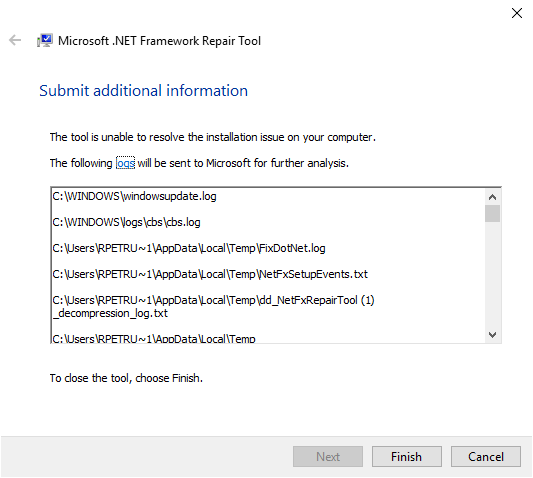
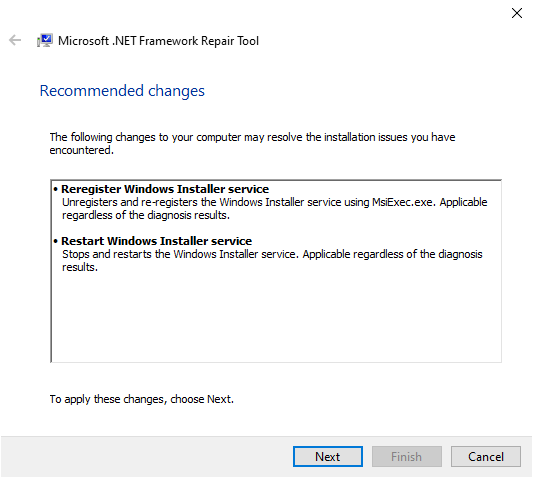







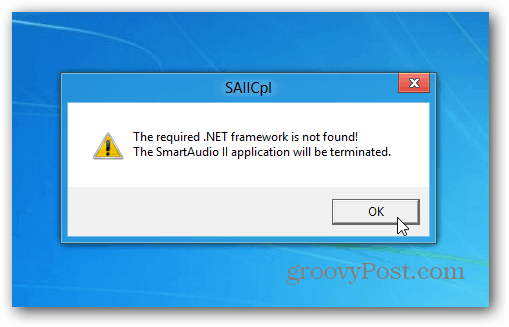





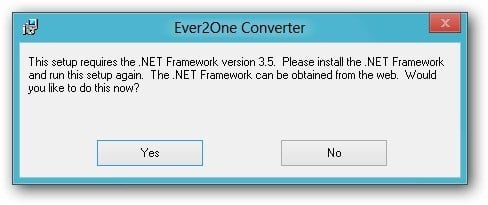
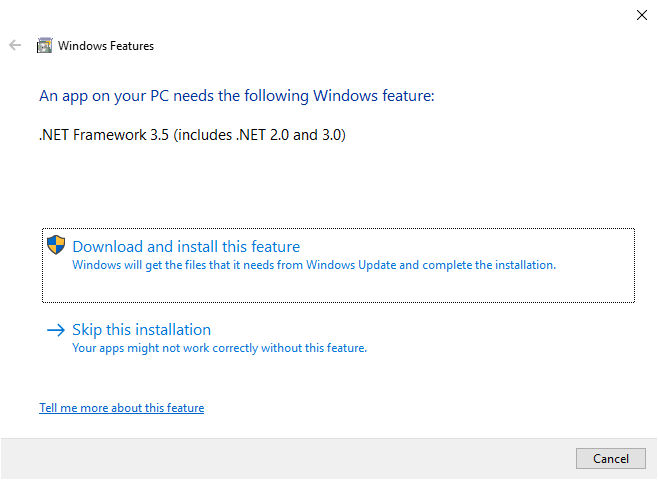
![Solved] Dot Net Installation Did Not Succeed | You must first install following version of Dot Net - YouTube Solved] Dot Net Installation Did Not Succeed | You Must First Install Following Version Of Dot Net - Youtube](https://i.ytimg.com/vi/-0eZMOifT2Y/maxresdefault.jpg)
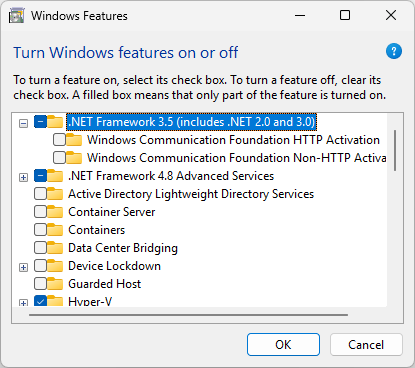









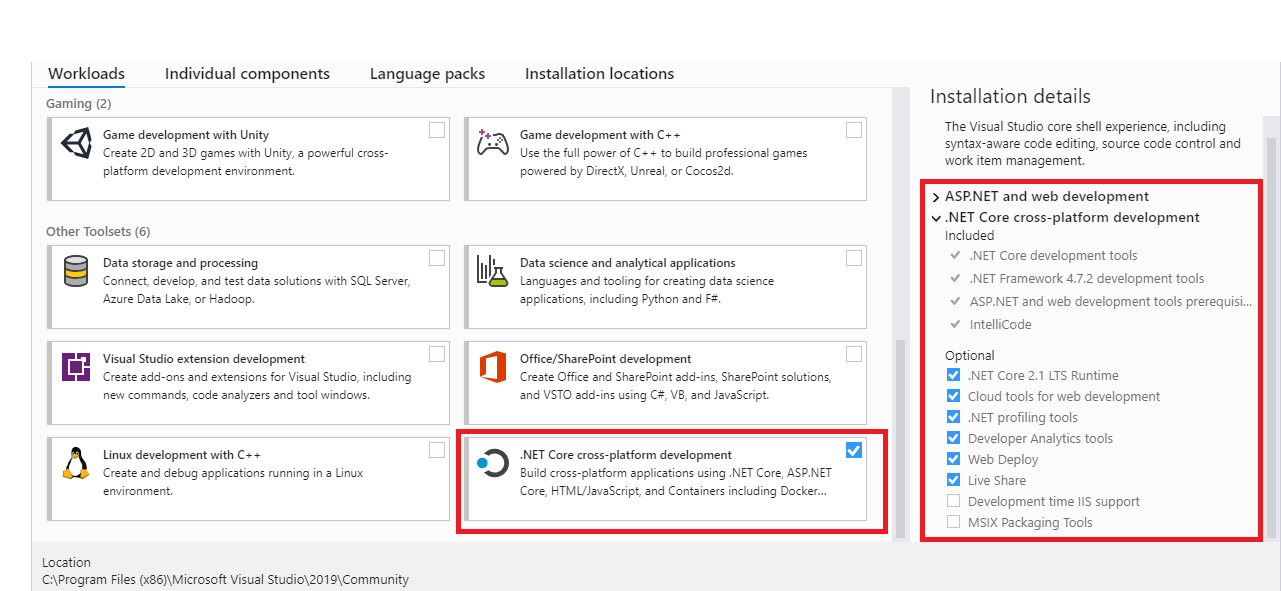
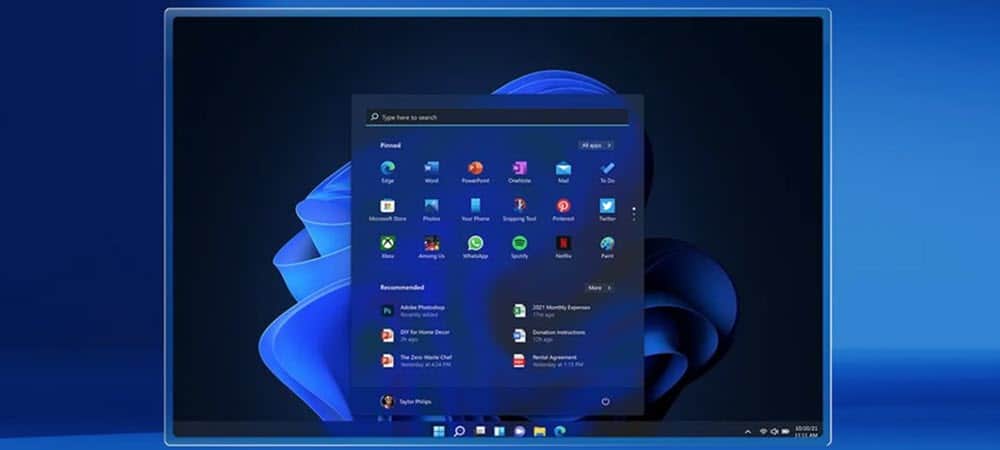



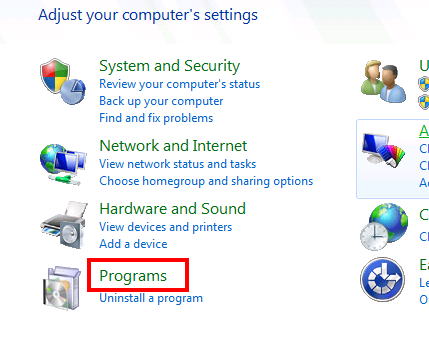

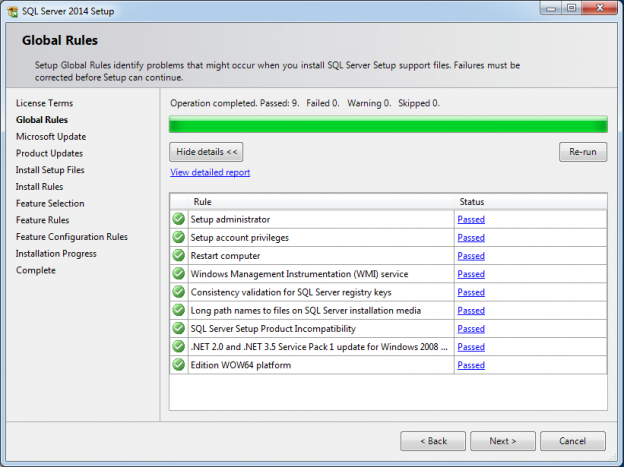


![NET Framework 2.0 Download & Install for Windows [x64 & x86] - MiniTool Partition Wizard Net Framework 2.0 Download & Install For Windows [X64 & X86] - Minitool Partition Wizard](https://www.partitionwizard.com/images/uploads/2022/07/net-framework-4-5-download-thumbnail.jpg)
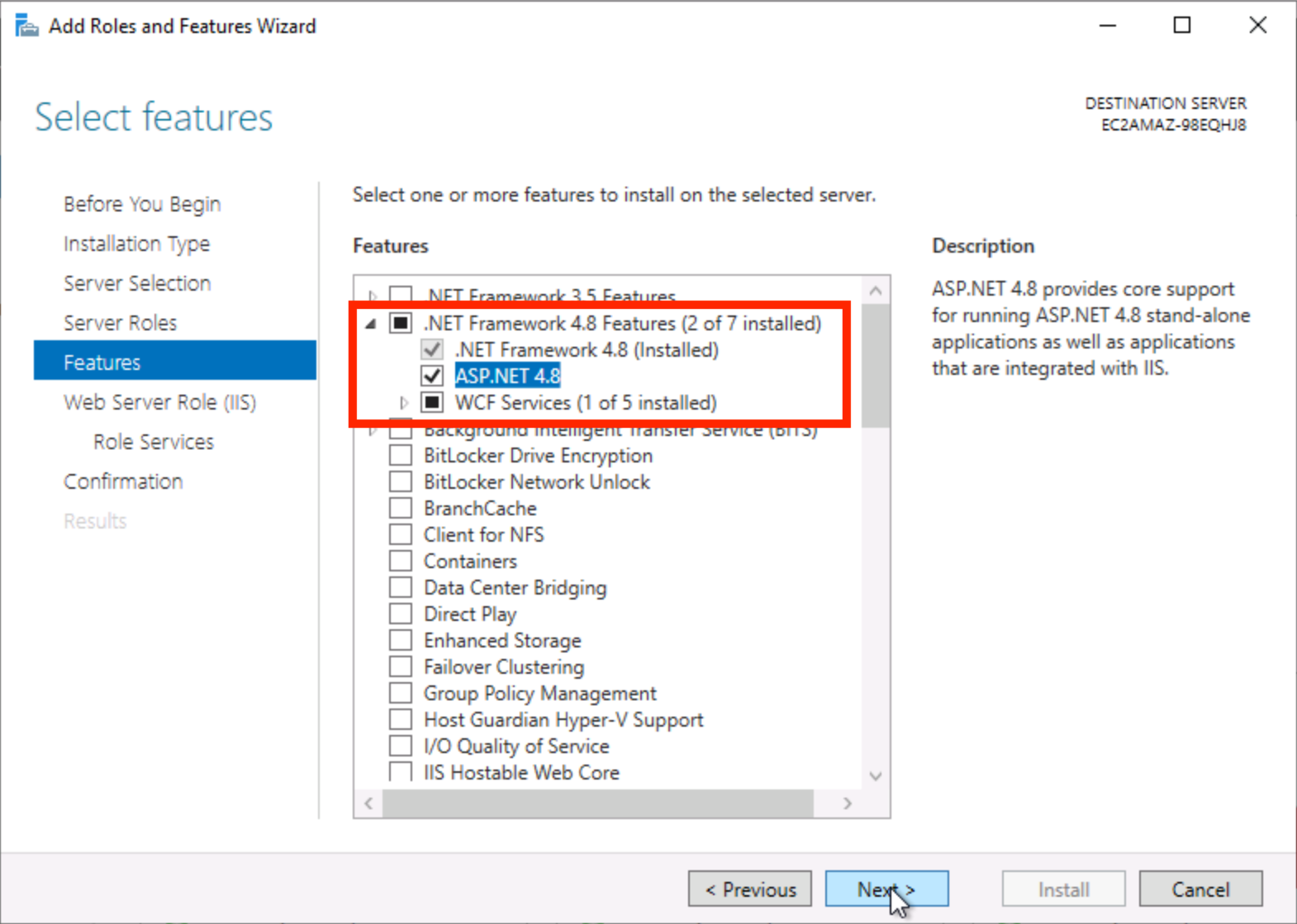
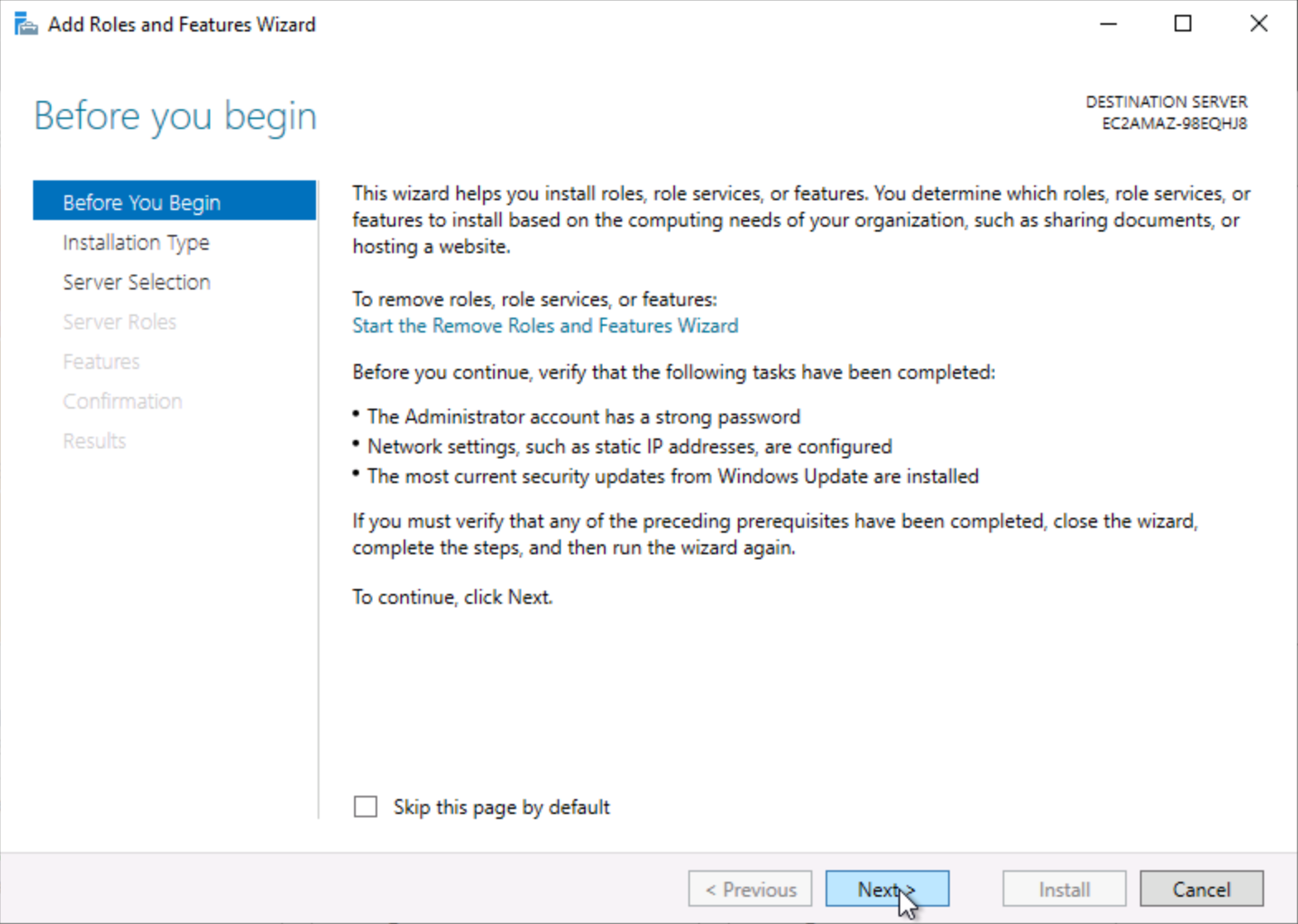

Article link: you must install or update .net to run this application..
Learn more about the topic you must install or update .net to run this application..
- You must install or update .NET to run this application
- You must install or update .NET to run this application
- Sửa Lỗi To Run Application, You First Must Install One Of The …
- To run this application you must install … – The Windows Club
- [17.3.0] You must install or update .NET to run this application.
- Download .NET 6.0 (Linux, macOS, and Windows) – Microsoft .NET
- Install .NET on macOS – Microsoft Learn
- Install the .NET Framework on Windows 10 – Microsoft Learn
- Install .NET on Windows – Microsoft Learn
- Fix: To run this application, you must install .NET Core – Appuals
- .NET and Visual Studio Code
See more: https://nhanvietluanvan.com/luat-hoc